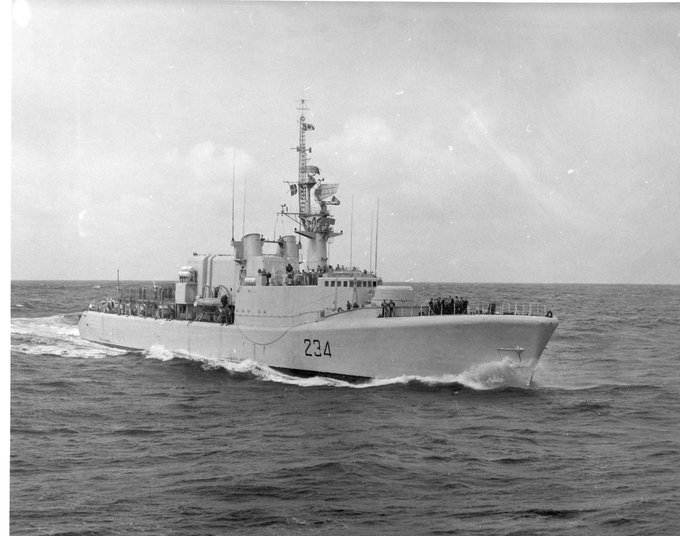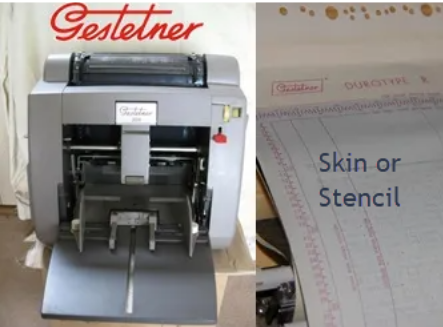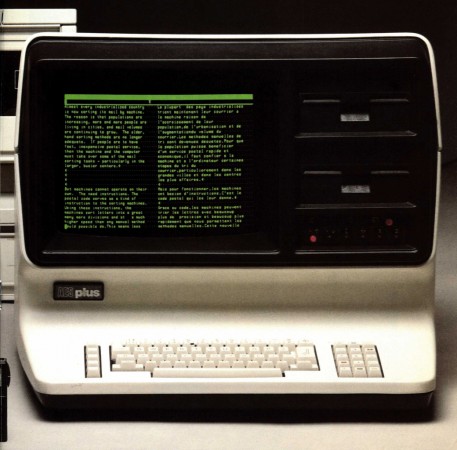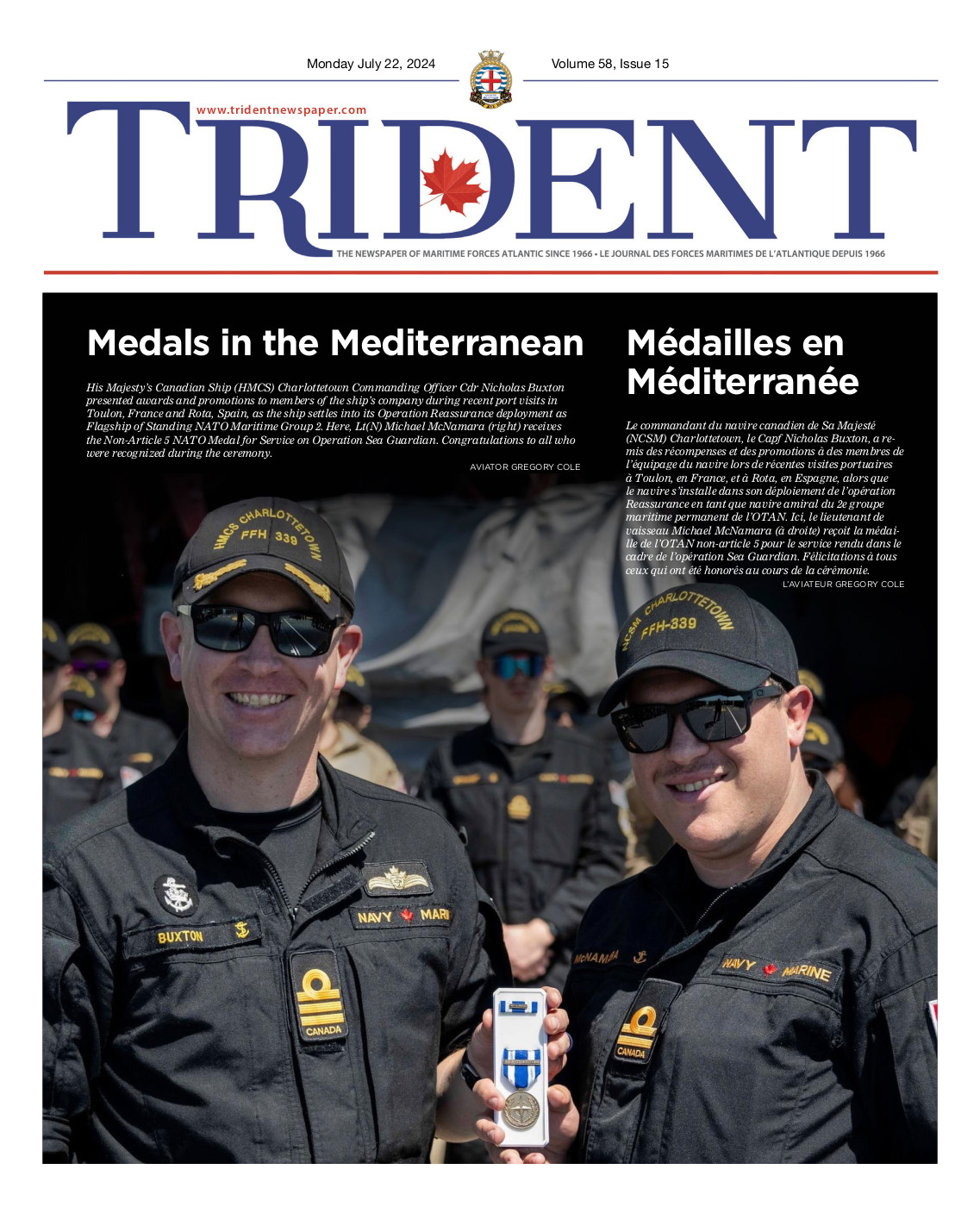
MARITIME MUSEUM OF BC
When Assiniboine brought word processing to the RCN
By Don Sheridan,
with CPO1(Ret’d) Bruce Cake, and CPO1 (Ret’d) John Arsenault
In this article we are celebrating an innovation in the Royal Canadian Navy that started specifically on HMCS Assiniboine – when the ship’s office trialed a Canadian word processing system that was, at the time, a world leader in this new technology.
Let’s flash back to 1979. CPO2 Bruce Cake was posted to Assiniboine in July of that year as Chief Clerk. A newly minted OS, John Arsenault, was assigned Junior Clerk, Ship’s Office a year later.
Assiniboine was in refit, when CPO2 Cake had an opportunity to improve the fit-out of the ship’s office. He started with what was common in those days; one manual typewriter, one electric typewriter, and a Gestetner for producing copies of routine orders and such. Operating a Gestetner involved perfectly typing on a foolscap-sized, thin membrane called a skin. The skin was placed on a drum and ink seeped through the skin where the typed characters had cut its surface. No erasers, maybe correction fluid, or starting over again!

SUBMITTED
Bruce had the typewriters replaced with modern electric typewriters, and the Gestetner was replaced with a Xerox photocopier. The photocopier seemed a good idea at the time. Unfortunately, it would normally break down on the first day at sea, because these early photocopiers were designed so the platen (top) of the machine moved back and forth to produce a single copy. It was unable to function for long in a warship at sea. Nonetheless, a more impressive innovation was in prospect.Around this time, AES word processors were revolutionizing office management. Designed and built in Montreal by AES Data Limited, this system allowed the user to create, store, and revise text electronically before printing. Before word processing, ship’s office tasks were, as noted, performed manually on a typewriter and possibly augmented with a Gestetner or later with a photocopier. The AES was unique in that it had a CRT (monitor) to enter, edit, and format the text. There was a choice of two printers: an IBM heavy-duty Selectric or a Qume daisy wheel. Storage included two 5 ¼ in floppy disks. Each was single-sided and low-density recording ~160KB or ~120 pages). The AES became known as the world’s first programmable, video screen, word processor.
The first steps in this innovation began when Assiniboine, on a Joint Naval Force Atlantic deployment, visited Chatham, England. CPO2 Cake walked downtown and came across an office supply store doing demonstrations on word processing. He asked if he could input a paragraph on the device, and was able to immediately see the text on a monitor. It was a eureka moment for him. When he returned to the ship with the sales literature and his first-hand experience, he briefed the Executive Officer, LCdr K.C. Beardmore. It was agreed he could pursue the idea of ship-board word processing when they returned to Halifax. The goal was to have one of the word processing companies set up a system on the ship at no cost.
Back in Halifax, CPO2 Cake learned that the federal government had a significant investment in AES, and he encouraged the company to see the marketing opportunity a ship-board word processor would provide. Fortunately, AES not only agreed, but also supplied the hardware, software and necessary training for him and his staff, plus worldwide support at no cost. The XO, who was enthusiastic throughout, then briefed the Commanding Officer, Cdr George Braithwaite, who in turn sought permission from MARCOM – which was granted. The rest is history.
Given the encouragement of the command team and MARCOM, Bruce and John (OS Arsenault) built a very productive relationship with the local representative.
The ship was part of Exercise Teamwork 80, so the AES system had to be in place before the fleet departed. Timing was everything. When it came to operating the AES, Bruce and John received basic AES training and began with what they wanted the machine to do.They described the process as trial and error.
The ship’s office staff also received some training from the Halifax AES technicians. Maintenance routines were practiced. Consumables and spares were provided. Thinking ahead, AES sent spares ahead to Rotterdam so that when the fleet arrived Assiniboine could access anything that was needed.
Inevitably, a DND agency responsible for communications security arrived with multiple antennae to determine if the AES system could be detected and its input decrypted. Hence, the AES was checked for spurious electromagnetic radiation. At the same time, the other NATO ships were flashing-up their own electronic systems, so there was quite a racket across many frequencies. In any event, only an antenna next to the AES in the ships’ office could pick up a signal. Another important tick in the box!
On arrival in Rotterdam the AES technician was first up the gangway. The AES system had no faults and conveniently it could print multiple copies with its daisy wheel printer. In Rotterdam, various clerks from NATO ships visited to admire the AES system – the first one they had seen. Especially keen were those from the US Navy.

CANADA SCIENCE AND TECHNOLOGY MUSEUM
“During the trial of the AES, we managed to develop many programs,” explained John Arsenault.
“We used it to complete forms, track leave, and a program was developed to track sea pay. The program for sea pay was used monthly and would automatically add an additional month to an individual’s sea time at the push of a button. It would then identify any individual that was eligible for a sea pay increase.”
From Assiniboine, and now at a new rank, LS Arsenault was posted to Germany, but returned for the period 21 November – 29 December 1984 at the request of the Commander, Canadian Fleet to teach the first course to the Navy on the AES Word Processor. Both LS Arsenault and CPO2 Cake worked out of the AES building (near Scotia Square) for this period of time.
“We showed others how they could utilize our programs and how to develop their own programs. By this time we had built programs that the AES personnel did not think possible – until I showed them that it could be done, and the programs would in fact work,” said John Arsenault, who retired from the Navy as a CPO1 and Client Services Senior Chief.
“Although I saw technology advance dramatically, in many cases it caused a heavier workload. Everyone seemed to want to put their special wording on things. I think the new technology caused an increase in paper consumption, funny how that happened. Those times were amazing, the technology just seemed to progress so quickly from the time on Assiniboine until I retired and I am sure it is still moving forward.”
From Assiniboine, Bruce Cake was promoted to CPO1 and posted to CFB Halifax as Base Clerk, and subsequently retired.
“I am grateful to have been in the right place at the right time and to have received the support of my seniors and juniors to get this trial off the ground (or in this case “out to sea”),” Cake said.
John Arsenault says he received a certificate of course completion from AES even while he was their first RCN AES instructor! He retired as a CPO1 and Client Services Senior Chief.





